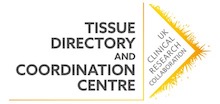Cost recovery in Biobanking

When patients donate samples for research they do so with goodwill as a gift to research. So why is there sometimes reference to ‘the cost of samples?’ We explain more about the use of Cost recovery in Biobanking in our latest blog.
How can tissue cost money when it is donated for free?
The process of getting access to a hospital, surgeon, pathologist, clinical data and laboratory is not a simple one. Whilst many researchers can access these resources for free, many cannot. Biobanks bridge this gap for researchers, by facilitating the process of sample and data collection, processing and transporting samples. This requires staff and resources to operate.
Why isn’t this covered by the NHS or Universities?
Many funding bodies are cutting funds to these resources and encouraging the biobanks to recover funds directly from the researchers. In this sense, the cost is often not 100% of the actual cost but is a way to recover some or part of the cost i.e. cost recovery. It is a way of making the usage of the resource transparent to the funding bodies. You can see what the MRC suggests charging for brain tissue here.
Where does the money come from and what happens to it?
Researchers will add the costs into their grant applications for sample recovery. They will then transfer these funds to the biobank to facilitate the tissue access. The biobanks use the funds to cover their staffing and overhead costs. Any surplus is reinvested in resources and the running of the biobank.
Are Biobanks allowed to charge for human samples?
Providing no profit is made this is an acceptable way of operating. The Human Tissue Authority (the governing body of human tissue in research) states, ‘Tissue banks may charge for providing donated tissue samples to researchers, including those working for private companies, so they can cover their costs. Where charging or cost-recovery is in place, the HTA expects research tissue banks to provide potential donors with sufficient information to ensure they understand that their tissue may be provided to researchers for a fee. The HTA also recommends that research tissue banks are transparent, by providing easily accessible information about how and why they charge, and to whom they will supply tissue samples. Potential donors can expect to be informed if their samples could be used for research involving the commercial sector, consistent with our code of practice on consent.’
More information is on the HTA website.
Contact us if you have any further questions on these issues.
